By Jeffrey R. Yago, P.E.
N4LPE
During any major disaster or grid-down event, communications will not only be critical for coordinating rescue efforts, but could actually save your life by receiving alerts and evacuation instructions. Unfortunately, almost all of our day-to-day communications with friends, relatives, and work are now with cell phones, and these may not operate for long if cell towers are damaged or power is lost.
Many preppers consider a CB radio their communication backup plan since these are very inexpensive, do not require a license or special training, and provide direct communication with other CB radio owners without repeaters or cell towers. While still a reasonable alternative, and I do own a CB base station and several handheld CB walkie-talkies, their very-low transmit power and limited operating channels restrict this form of communication to only a few miles, depending on terrain and weather.
After major storm damage and the wide-area destruction from flash-floods and forest fires, historically it’s been individual amateur radio operators to the rescue. Unlike other forms of radio communication, amateur radio operators are allowed to legally operate on far more frequencies, across many more radio bands, and with hundreds of watts of transmit power. Amateur radio operators regularly talk with “hams” not only in other states, but in other countries. Most hams also have a backup battery bank or generator to keep their radio equipment up and running during an extended power outage.
During emergencies, amateur radio operators are called upon to relay messages to update local rescue efforts with distant relief agencies, and pass along “I’m okay” notes for their neighbors to worried relatives many states away. There are also radio “Nets” made up of amateur radio volunteers who regularly train and participate in drills to practice relaying messages for others during emergencies.
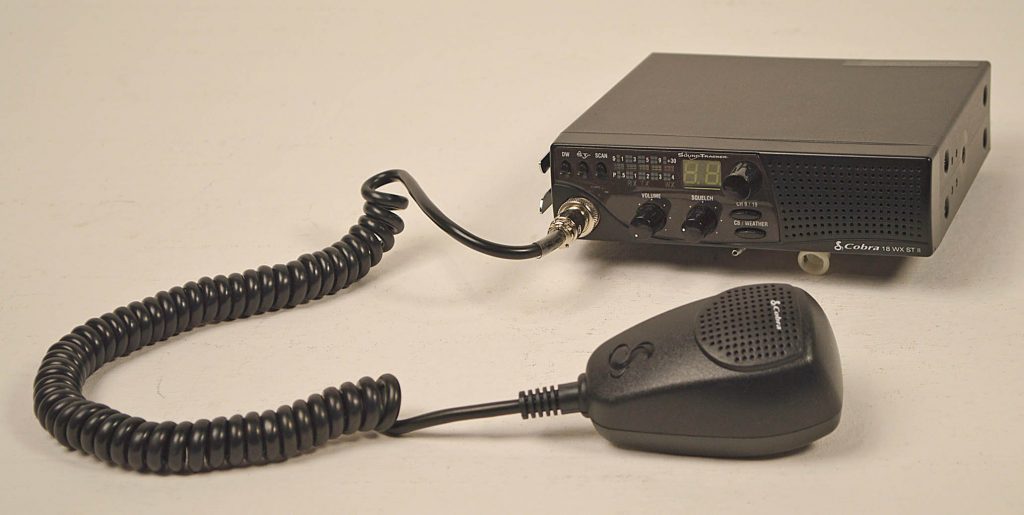
Cobra 4-watt 40 channel CB radio with weather alert band
During non-emergencies, local “Nets” allow on air chats with fellow radio enthusiasts through weekly scheduled over-air get-togethers. Local amateur radio Nets also connect with national volunteer radio groups during emergencies. The Amateur Radio Emergency Service (ARES) is sponsored by the amateur radio operators themselves, and is dedicated to providing communication assistance to local and regional relief agencies in time of emergency.
The Radio Amateur Civil Emergency Service (RACES) is totally government funded and the all volunteer members are officially authorized to assist in civil defense communications during both state and national emergencies. Volunteer amateur radio operators that take part in the RACES network are authorized to communicate with other members of the RACES network and government agencies during these emergency events.
Both ARES and RACES groups provide volunteers with free training and regular on-air drills to practice emergency procedures and hone radio skills. Becoming a licensed amateur radio operator and joining one or more of these radio nets is especially important if you live in a more remote location or isolated small community. In fact, during and immediately after a major disaster event occurs, you may be the only working communication link there will be to the outside world for your family, your neighbors, your local county government, and your police or sheriff’s department.
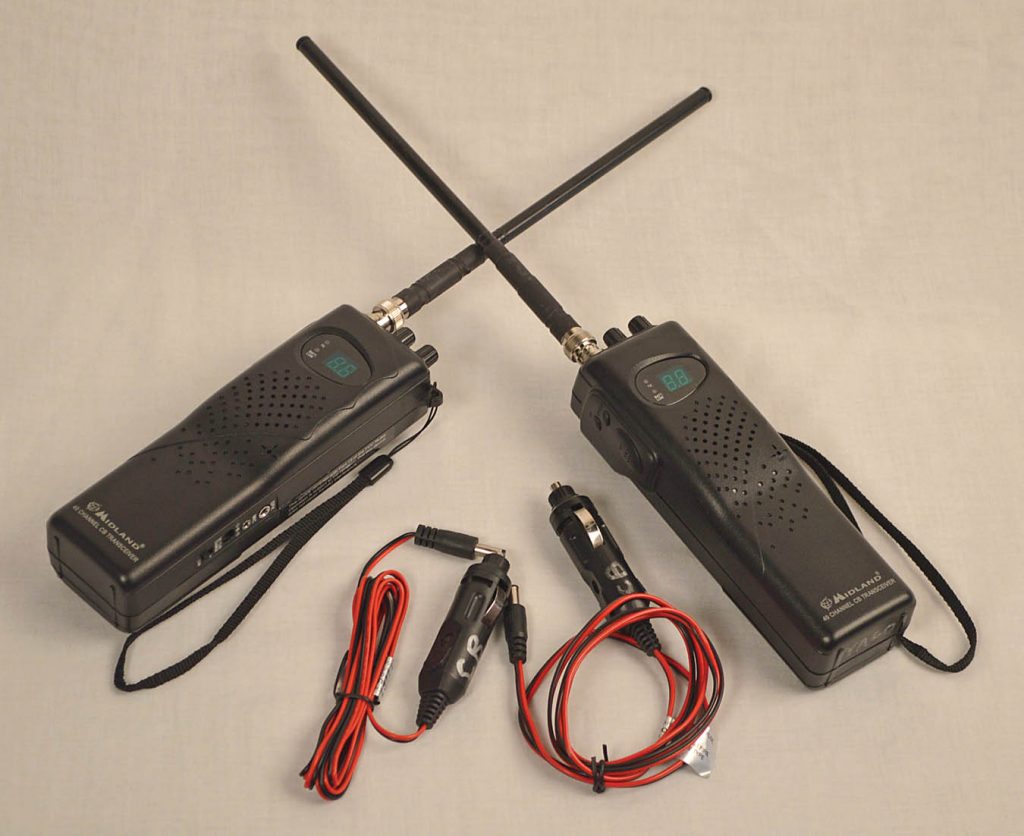
Midland 4-watt 40 channel CB walkie-talkies
Radio licensing
With the major advancements in radio technology, becoming an amateur radio operator and obtaining your amateur radio license is much easier than in the past. When I was younger, most hams had to know enough about electronics to actually design and build most of their shortwave radio equipment. In addition you had to demonstrate sending and receiving messages using Morse code. Today you only need a very-basic working knowledge of electronics and antenna theory to pass the test, and learning Morse code is no longer required.
In addition, the FCC now offers a basic “Technician Class” amateur radio license which is much easier to obtain. Most local ham radio clubs offer free licensing classes several times each year which involve a few months of once-per-week evening classes typically held at a local public building or church. These classes use the same step-by-step handbook regardless of where you live, and the standardized test is given right after the final class. There are very few failures, and after notifying the FCC that you passed, your license and unique radio “call sign” will be sent immediately by e-mail. Those having trouble are allowed to take the test again after a brief refresher class covering the problem areas of study. In fact, it’s almost impossible to not obtain your Technician Class license!
Obviously this basic radio license has a few more restrictions than the full “General Class” radio license. The Technician Class license limits you to the much higher-frequencies of the radio broadcast band, which have a shorter “straight line” transmission distance depending on terrain and weather. However, almost every area of the country and most cities have a “repeater” transmitter located on a nearby hilltop or tall building. These repeaters pick up the transmission of your lower-powered handheld or in-vehicle radio transceiver, and re-broadcast your weak signals over a much higher power radio transmitter and tall antenna.
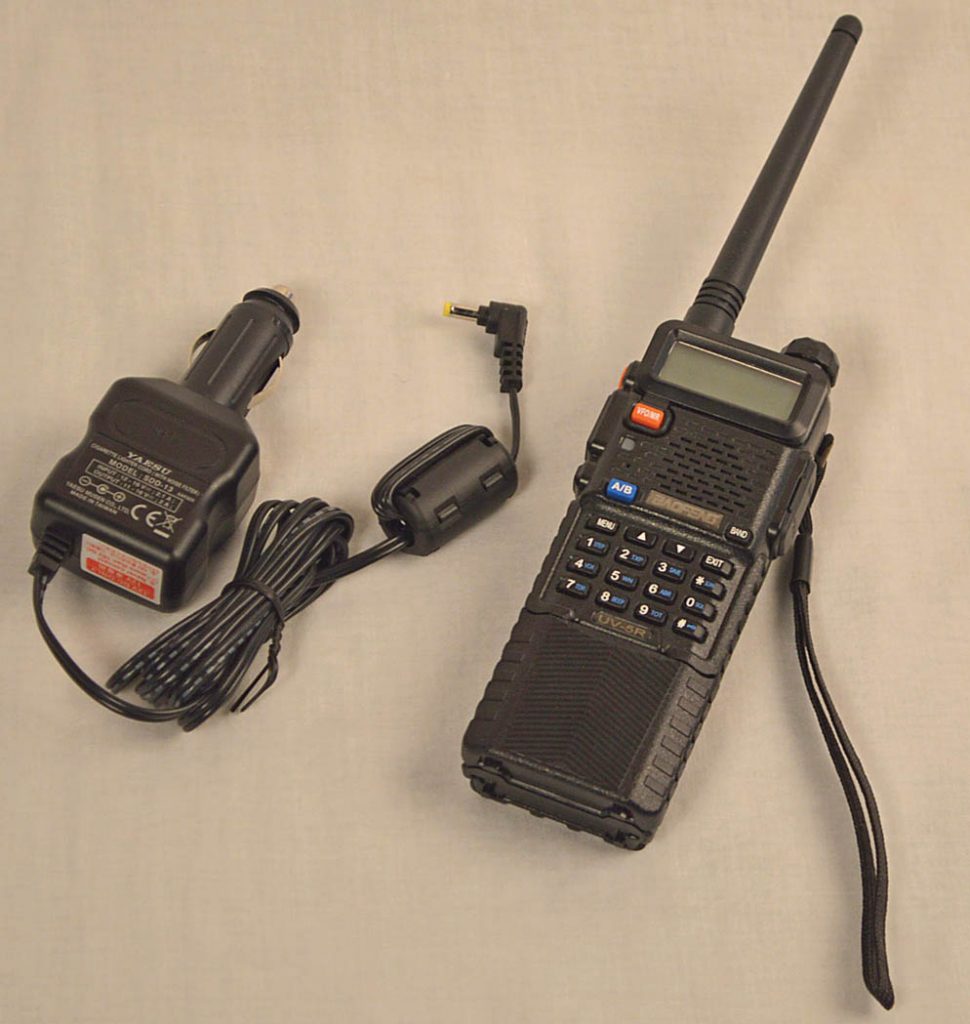
Baofeng Model #UV-5R hand-held 5-watt 2-meter Ham transceiver
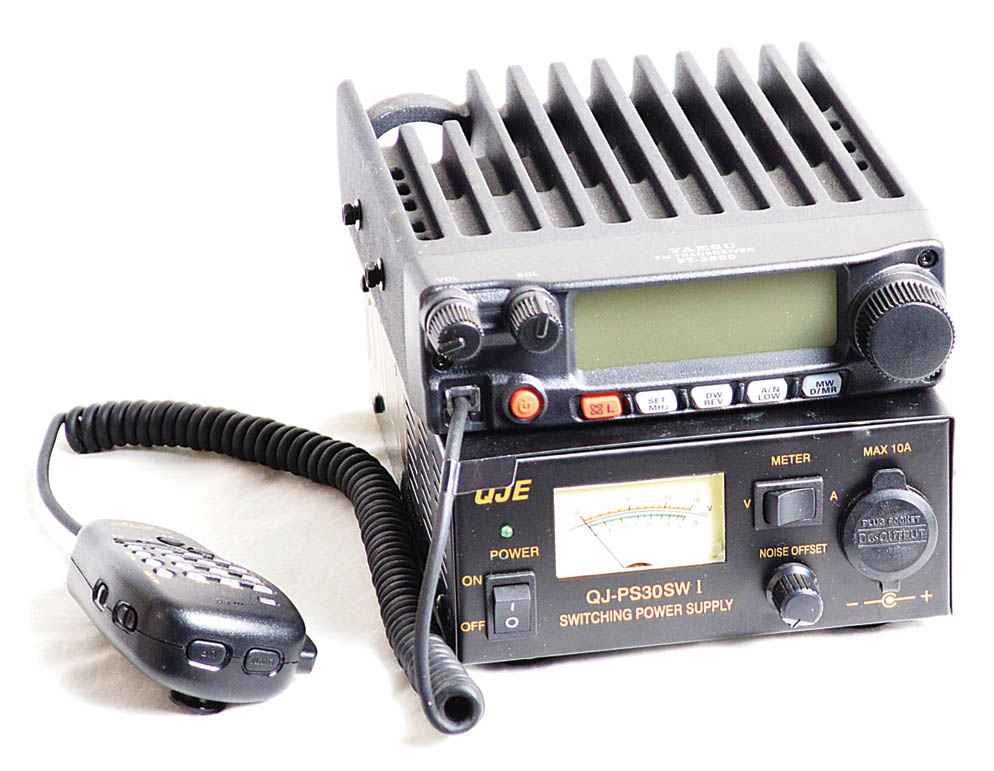
Yaesu Model #FT-2980R mobile 2-meter 80-watt ham transceiver with separate 12-volt power supply
With a repeater, you can easily have clear radio communications over hundreds of square miles even using just a small handheld 5-watt transceiver. Most repeaters operate on the 2-meter and 70-cm very-high frequency radio bands and are normally funded and maintained by the local radio Net. There is no charge for using a repeater if you hold a radio license and join your local area Net. You can also access repeaters and Nets in other parts of the country when traveling and just want to chat, or perhaps you might need emergency road assistance.
Most amateur radio enthusiasts start out with this easier-to-obtain “Technician Class” license. There are many handheld 2-meter radios costing under $100, making it fairly easy to get started. I operated several years with just my Technician Class license and joined in each week to our regular Monday night radio Net “check-in.” This practice time helps you become more familiar talking with other hams while learning some of the many radio code words like “73” which means “best regards, I’m going off air,” or “what’s your QTH” which is someone wanting to know your current transmitting location. There are many more terms and radio slang you will pick up with a little practice. These codes shorten on air talk time and reduce miscommunications, especially when audio reception levels are less than desired.
For many preppers, the Technician Class license will provide all the emergency communications equipment and licensing they will ever need, and that’s not unusual. If you are part of a close-knit group of preppers in the same geographical area who also own a 2-meter transceiver and have a Technician Class radio license, your group can stay connected during a critical situation or disaster, long after regular phone and cell service have failed. However, for those of you wanting to add the ability to talk with other amateur radio operators not only in other states, but in other countries, the “General Class” license is the next step.
This also means you can receive and send news directly to and from other individuals in other parts of the world without being filtered or blocked by rogue governments. The much higher transmit power and lower frequency bands available under the General Class radio license will give you many more communication options.
In addition to talking, you can use your ham radio equipment to send and receive text messages, hookup your home computer for digital communications without a land line or cell tower, route your signals directly over specialized earth-satellites, send and receive videos and photos without a working internet, and even talk with the International Space Station orbiting the earth as most of our astronauts hold an amateur radio license.
Ham radio equipment
For this introduction to amateur radio, I do not want to go too far down the rabbit hole as this topic can become very technical and that’s not really necessary to learn the basics. For anyone just starting out fresh who just received their Technician Class license, there are several very-low cost radios that will get them on air almost immediately.
By far the most popular low-cost 2-meter transceiver for just starting out with a Technician Class license is the Chinese manufactured Baofeng Model #UV-5R handheld radio, since it works and is cheaper than dirt. Although I purchased mine several years ago for $75 including charger and extra battery pack, I recently found them at Wal-Mart and on Amazon for under $25. These 5-watt radios have lots of programming features and operate on the 2-meter band, which is the most common frequency used by all Technician Class radio operators.
A few months later I decided to outfit a 6 ft. x 12 ft. enclosed utility trailer as a bug-out vehicle and purchased a higher-quality Yaesu #DT-2980R portable 2-meter radio to mount in the trailer for emergency communications if I need to go mobile.
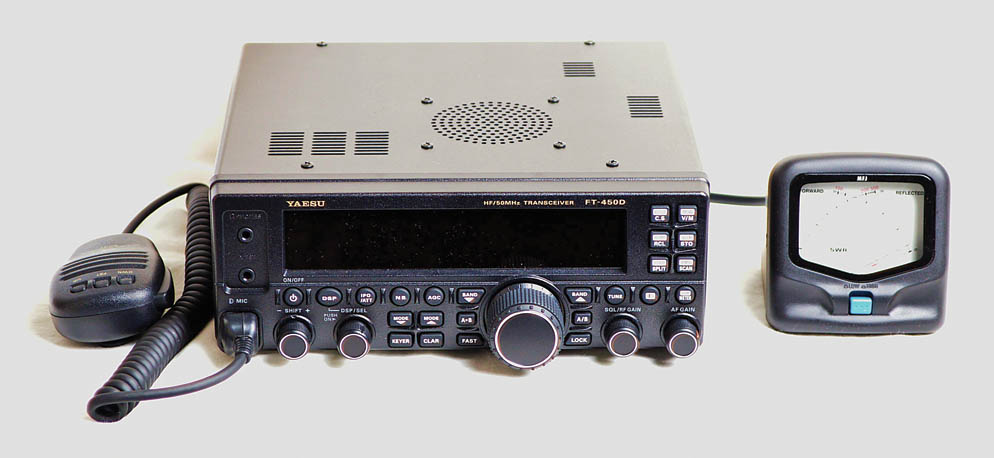
Yaesu Model #FT-450D multi-band ham radio and SWR antenna meter
Like most ham radios, this 80-watt Yaesu radio operates on 12-volt DC power, which is perfect for mobile applications. However, since my utility trailer also includes a small gas generator, I ordered the separate 12-volt DC power supply connected to this 120-volt AC generator. This saves my backup battery charge as it takes lots of power to operate all higher-wattage transmitters. To really improve the range of this portable setup, I added a standard 2-meter antenna attached to a fiberglass telescopic pole which extends up to 35-feet when the trailer is parked, and only 6 feet tall when collapsed along the side.
A few years later I started back with the weekly night classes from my local ham radio club and finally obtained my “General Class” license. While this opens up many more radio bands and allows much greater transmitter power and range, this requires adding a separate multi-band type ham radio in my radio room to go along with my 2-meter radio. After much deliberation and breaking into my piggy bank, I purchased the Yaesu Model #FT-450D transceiver and a separate power supply. Like most ham radio equipment, this desktop base station was designed to operate on 12-volts DC even though it is not normally used in a mobile installation.
I stayed with Yaesu brand equipment due to their high-quality and reasonable pricing when I added more radio equipment later, but both Kenwood and ICom have very competitive product lines for anyone just getting started in amateur radio and are also excellent brand choices.
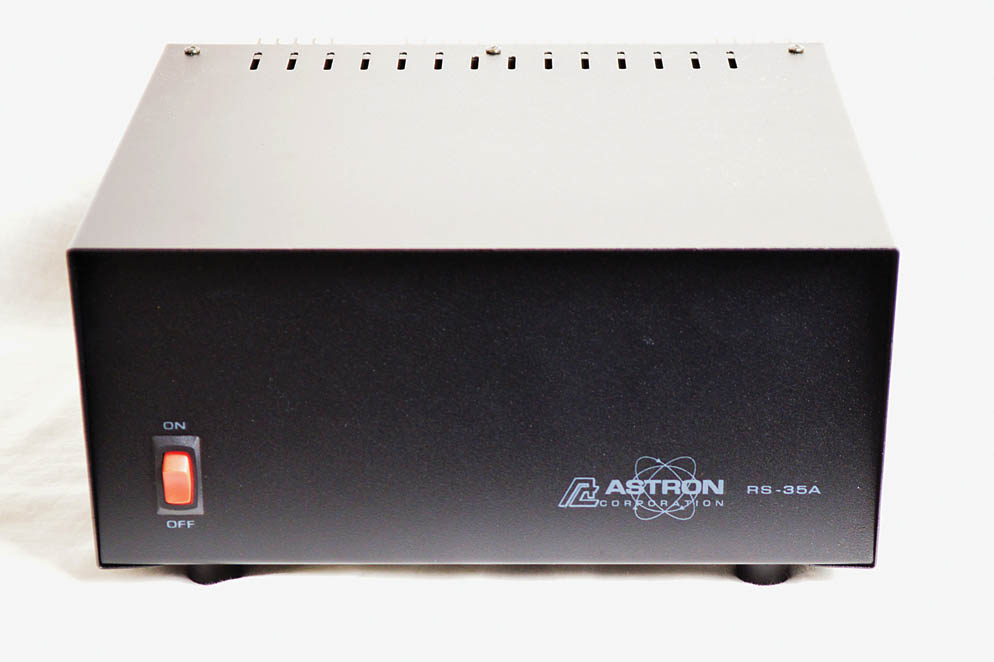
Astron #RS-35A heavy-duty 12-voltage DC power supply to power larger ham radios
While handheld and in-vehicle 2-meter radios typically come with a matching antenna, higher wattage base stations with multi-band transceivers typical sold for the General Class operator require separate and more specialized antennas. These antennas require insulated wires or “elements” that can be 100 feet or longer in order to receive the longer radio wavelengths used to communicate great distances.
However, many times these antennas are just a wire attached to an insulator at each end and stretched between two trees, or stretched from a tall center pole extending down to the ground level at each end. Antennas are critical for longer range radio communication, but they do not need to be expensive or complicated, and many times a little trial and error finds the best combination for your specific radio.
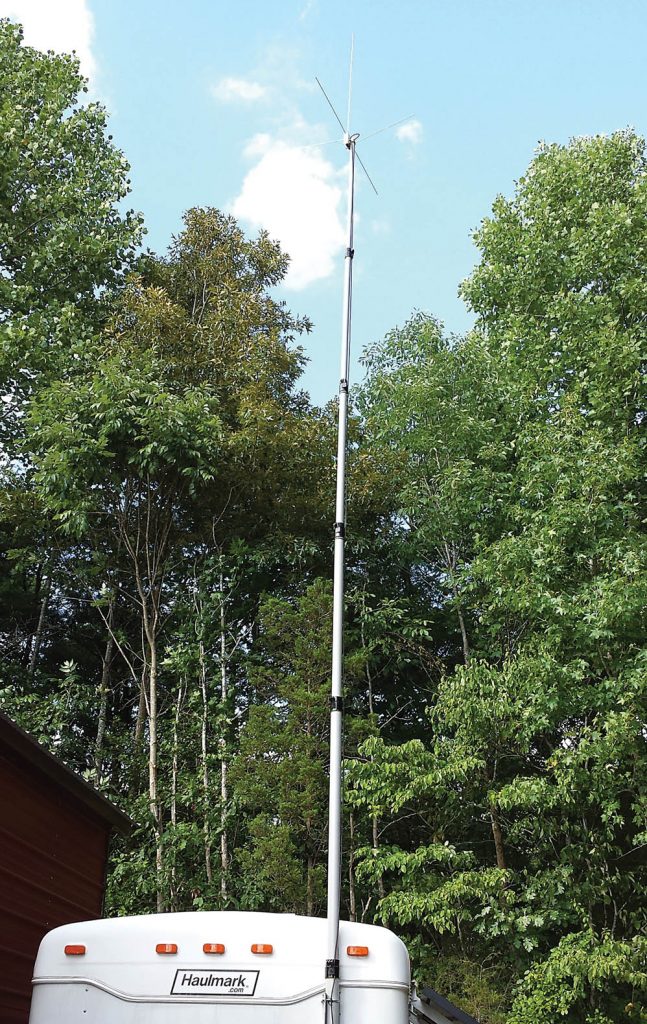
2-meter antenna attached to telescopic fiberglass pole mounted on utility trailer
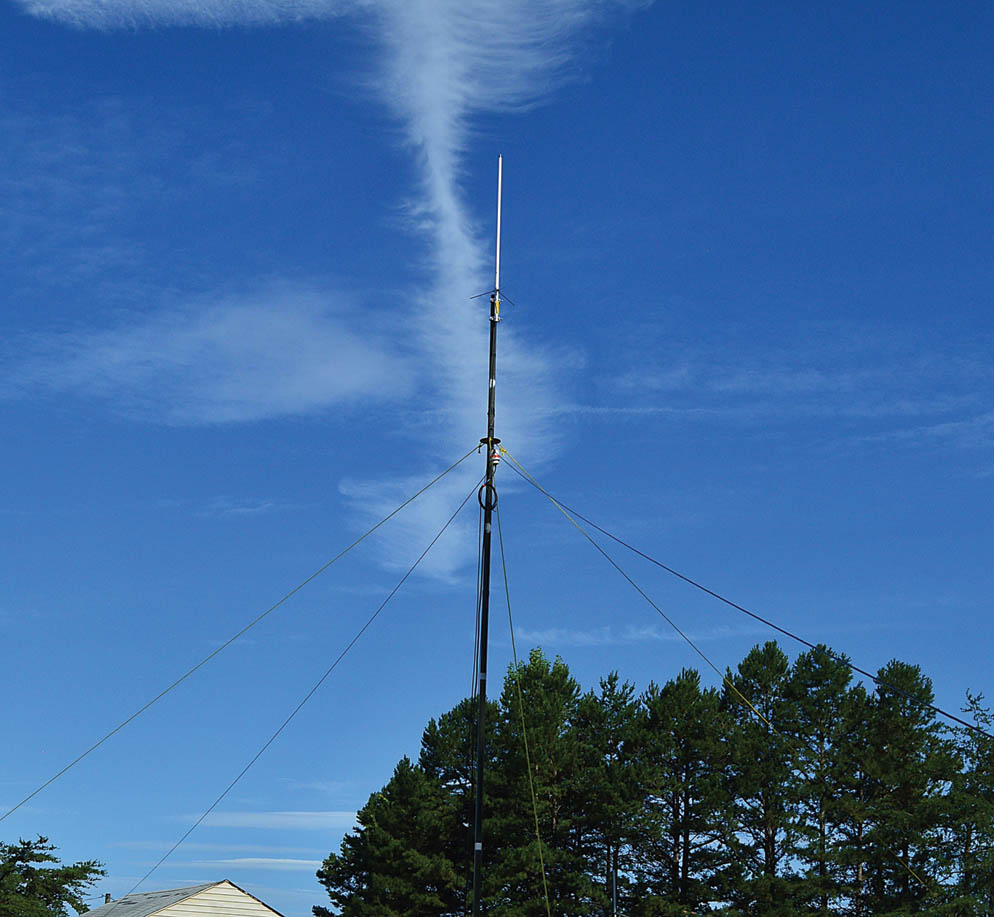
Tall multi-band ham radio antenna with guy wires
Summary
Although ham radios will provide reliable communications to emergency services when all other forms of radio and phone communications have failed, it is still against the law to operate a radio transmitter without a FCC license, but you can always listen in without a license if you have the right receiver.
I am hoping this article will encourage readers and their older kids to consider getting involved in amateur radio as part of their long-term emergency communication planning. In addition, during “normal” times amateur radio can be a great hobby, and there are lots of ham radio clubs and groups offering all kinds of free classes and fellowship for like-minded individuals. It is very common for junior and senior high school students to get their amateur radio license along with their parents, and I am sure those younger minds found the instruction material much easier to learn than I did when I received my license long after retirement.
Resources and education
If there is not an Amateur Radio Group in your area, you can order the same standardized workbook used in all states, and each includes a CD disk containing multiple example radio tests with both the questions and answers: “Level 1: Technician Ham Radio License Manual” and “Level 2: General Ham Radio License Manual” by ARRL, www.arrl.org
Take sample ham tests on-line for free:
www.hamtestonline.com
Ham radio equipment
Universal Radio 800-431-3939
www.universal-radio.com
Ham Radio Outlet 800-765-4267
www.hamradio.com
Associated Radio 800-497-1457
www.associatedradio.com
In addition to being a ham radio operator with call sign N4LPE, Jeff Yago is a licensed professional engineer and certified energy manager with more than 40 years of solar and emergency preparedness experience. He has authored numerous articles for multiple national publications. Signed copies of his book titled “Lights On” are available from the www.offgridprepper.com website or by calling
804-457-9566.


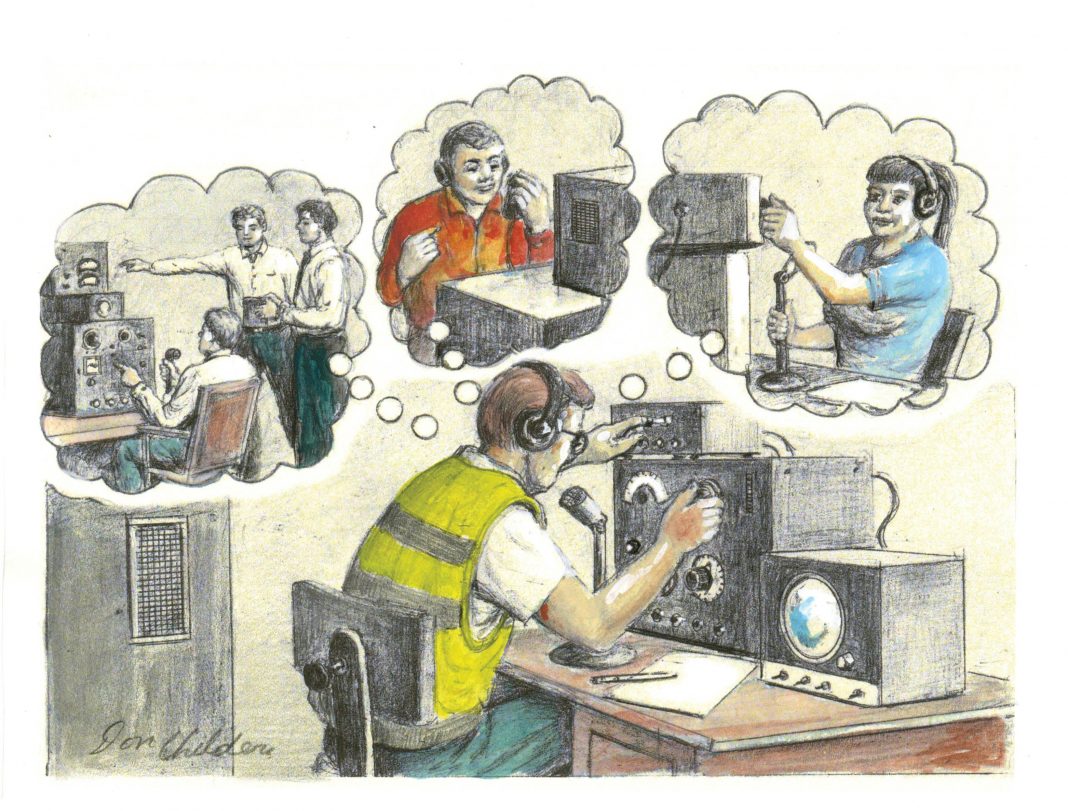

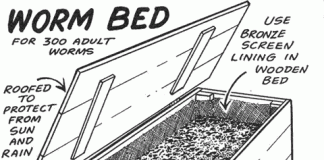






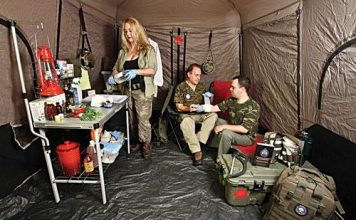
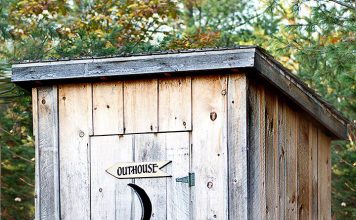


GMRS is still a local option only if there are no repeaters. Repeaters may extend that range out to 50 miles with proper equipment. If you want to communicates outside an area affected, then you will need a HF license. GMRS repeaters are not widespread in smaller communities, like Savannah, Ga.
In this day in time, we’re just waiting for Russia to use an EMP against us, or perhaps a CME will knock out the grid and electronic communication (cell phones) and all electronics that will take years to repair. I think HAM radio is our best hope of communication. If only I could convince the man of the house. It’s useless expecting “what will come, will come” and that there is no hope. Preparation is key.
The MUCH better option is to study for the tests(the questions and answers are given to you) and take your tech and general. Then you can use high frequency and you don’t need repeaters to talk around the world.
GMRS (General Mobile Radio Service) is a better option. You don’t need to take a test, you can use and own your own repeaters just like ham operators do, and with permission you can use any GMRS repeater in the country and they are in every state and more of them are going up every day, your whole family can use your license, radios can use up to 50 Watts, you can talk just as far on a GMRS repeater as far as you can on a comparable ham repeater (up to 50-70 miles), it only costs $70.00 for a 10 year license, you can run them in your car, in your home and portable (walkie talkie), there are 8 repeater pair of frequencies, frequencies are found in the business band at 462 MHz, cost of equipment is comparable to or less than ham radio equipment and they are just fun. You can use them to talk to the kids while camping, hiking, or just having fun. Here is a web site to help. http://www.usagmrs.com